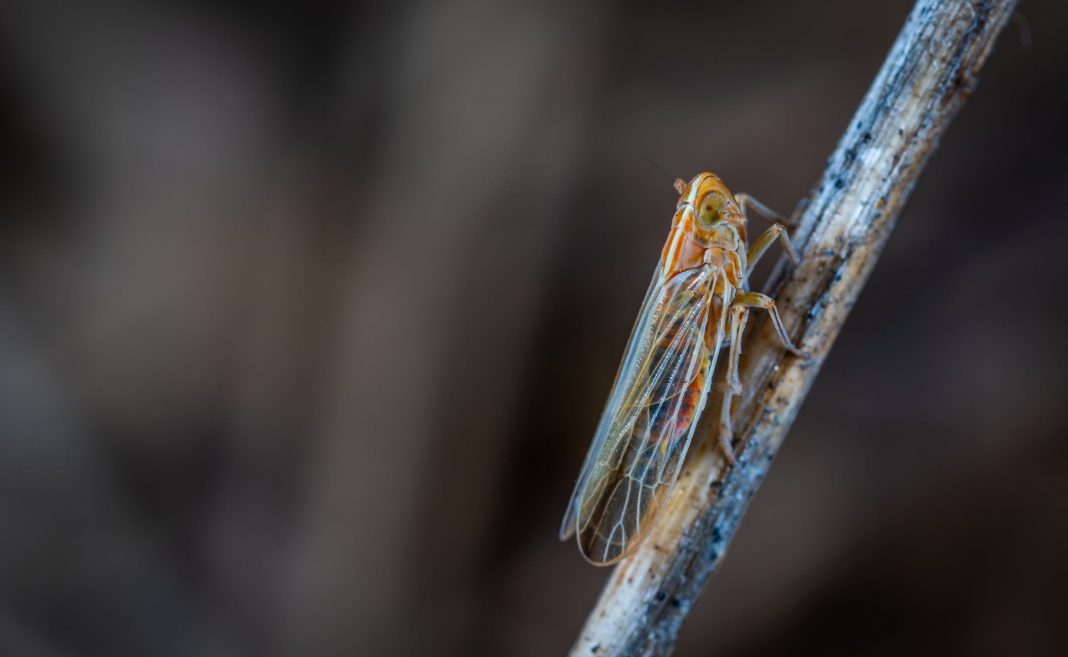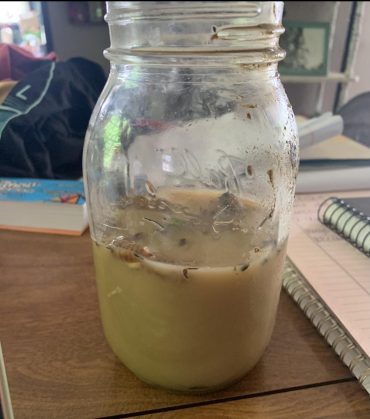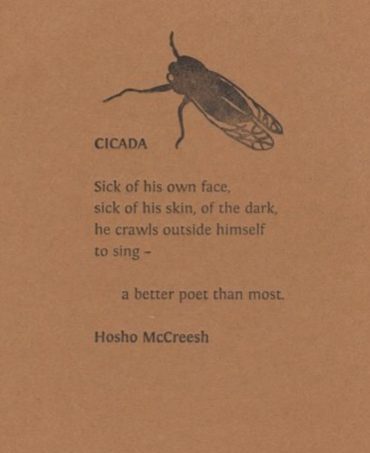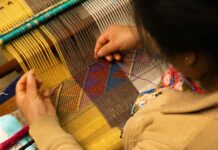 “This is… disturbing,” my nine-year-old said, surveying the backyard like a sweeping panoramic shot of a war movie, the bodies of animals and men strewn about a beach. Except, this wasn’t Dunkirk. This was our backyard in South Knoxville.
“This is… disturbing,” my nine-year-old said, surveying the backyard like a sweeping panoramic shot of a war movie, the bodies of animals and men strewn about a beach. Except, this wasn’t Dunkirk. This was our backyard in South Knoxville.
We were in the thick of what my friends and I have started to refer to as The Cicadaing of 2021.
 There are over 3,000 species of cicadas, but they can all be broken down into two categories: annual and periodic. The annuals, as their name suggests, appear in smallish numbers once a year and die off around fall. Here in Tennessee, we are smack dab in the middle of the periodic Brood X cicada invasion: The Cicadaing of 2021. Basically, these guys have been underground for the last 17 years, eating tree sap and essentially resting. For the first time since 2004, they have tunneled above ground, shed their exoskeletons, and began their lovely screaming…I mean…mating song, after which the females will use their ovipositor to lay eggs. An ovipositor is basically a sword shaped piece of metal on the female’s abdomen (yes, it actually contains metal) that is serrated on the end, allowing the female cicada to carve a “V” shape into a tree and deposit 20 eggs at a time until she has deposited her full count, 500 eggs, by the end of the day.
There are over 3,000 species of cicadas, but they can all be broken down into two categories: annual and periodic. The annuals, as their name suggests, appear in smallish numbers once a year and die off around fall. Here in Tennessee, we are smack dab in the middle of the periodic Brood X cicada invasion: The Cicadaing of 2021. Basically, these guys have been underground for the last 17 years, eating tree sap and essentially resting. For the first time since 2004, they have tunneled above ground, shed their exoskeletons, and began their lovely screaming…I mean…mating song, after which the females will use their ovipositor to lay eggs. An ovipositor is basically a sword shaped piece of metal on the female’s abdomen (yes, it actually contains metal) that is serrated on the end, allowing the female cicada to carve a “V” shape into a tree and deposit 20 eggs at a time until she has deposited her full count, 500 eggs, by the end of the day.
Cicadas emerge en masse to engage in a phenomenon called “predator satiation,” or, in non-scientific terms, they emerge in such large numbers (1.5 million an acre to be exact) that eventually predators get literally sick of eating them and leave them alone. Since cicadas have no defense mechanisms (they don’t sting, pinch, or bite, they are huge and slow moving, and they don’t fly very well), appearing in such large numbers assures that at least some of them will survive long enough to repopulate. That all sounds great I guess, but the annoyance of crunching across my lawn every day was wearing thin.
There are cicadas EVERYWHERE right now.
I tend to flare toward the hyperbolic side of writing, but I am being 100% honest when I tell you that there must be thousands upon thousands of them in various states of their cicada circle of life in my yard. I am at first jealous of them, telling my best friend that I wish I could nap for nearly 20 years, wake up, scream, have sex, then die. She, coming up on week four of a virus that had passed through every member of her family and circled back to claim victims once again, agrees with me.
My mild jealousy and lackluster notice of them turns slowly to horror while I watch my dogs pick them off of fence posts and tree trunks like a rare delicacy, and as I frantically Google “how many cicadas can dogs eat,” “cicadas bad for dogs???,” “dog eating dead and alive cicadas” to make sure their newfound snack food won’t kill them. The terror continues when I am gifted a jar filled with, “some dirt water and real cicadas mama!” by my four-year-old on Mother’s Day. (I wanted a new Apple Watch band but this, I guess, was fine.) After a week or so, fear subsides into blind fury. “Do you hear this?!” I shout via video message to another friend. “What is the cicada situation like in West Knoxville? It’s so loud here I can’t think.” I leave my house to head into another part of town where the mating roar of Cicada Tinder will be replaced by the chatter of college students and traffic…
 No one, to my knowledge, has anything good to say about cicadas (except maybe my four-year-old), especially this many of them at one time. It’s overwhelming and I’m still largely unclear on what their purpose in the ecosystem is, aside from a brief mention I found somewhere eluding to their exoskeletons being good natural fertilizer. You cannot tell me that Noah brought two of these suckers into the arc on purpose.
No one, to my knowledge, has anything good to say about cicadas (except maybe my four-year-old), especially this many of them at one time. It’s overwhelming and I’m still largely unclear on what their purpose in the ecosystem is, aside from a brief mention I found somewhere eluding to their exoskeletons being good natural fertilizer. You cannot tell me that Noah brought two of these suckers into the arc on purpose.
One night, unable to sleep and stumbling down the Instagram scroll rabbit hole of a musical, then its leads, then their partners, then their ex partners, then a TV show, then a Rocky Horror remake, then Eva Green, then 007 (did y’all know that Rami Malek is FORTY?), I tired of looking at people I didn’t know and settled on my real life Instagram feed instead. There, in the posts of a friend of a friend, I found this poem. I read it once and continued scrolling, then stopped and went back to it a second time. At first it seemed really cheesy, but somewhere around read number three, it started to resonate with me.
Spring has always signified change. I am most hopeful in spring. I tend to shake off the gloom that dead leaves and colorless cold skies bring, instead focusing on flowers and plants and new possibilities. This spring, I’m growing through some personal challenges that I never imagined I would have to grow through. Challenges that have shaken and devastated me, challenges that at times I worried would actually kill me, the grief and loss so strong that a dull ache in the middle of my chest lingered for weeks, still returning even now.
Cicadas are loud and annoying, yes, but they serve as a visceral reminder that sometimes crawling out of the safety of a familiar life, all you tell yourself you will ever know, and emerging into the light to do something better, even if only for a short time, can be the most worthwhile thing you do in a lifetime. But, you must first let go of the fear that crawling out of the dark, out of the comfortable routine you’ve enshrined yourself in, can bring. Suddenly, I found myself wondering why more of us don’t emerge into the light; why so many people are mired to the spot they stand in permanently, feeling stuck in the in between but too hesitant to move in any direction other than stillness. Cicadas, turns out, can serve as a reminder to all of us that life is too short and too fleeting to repeat the same things over and over and to “do the thing,” no matter what the thing may be.



















